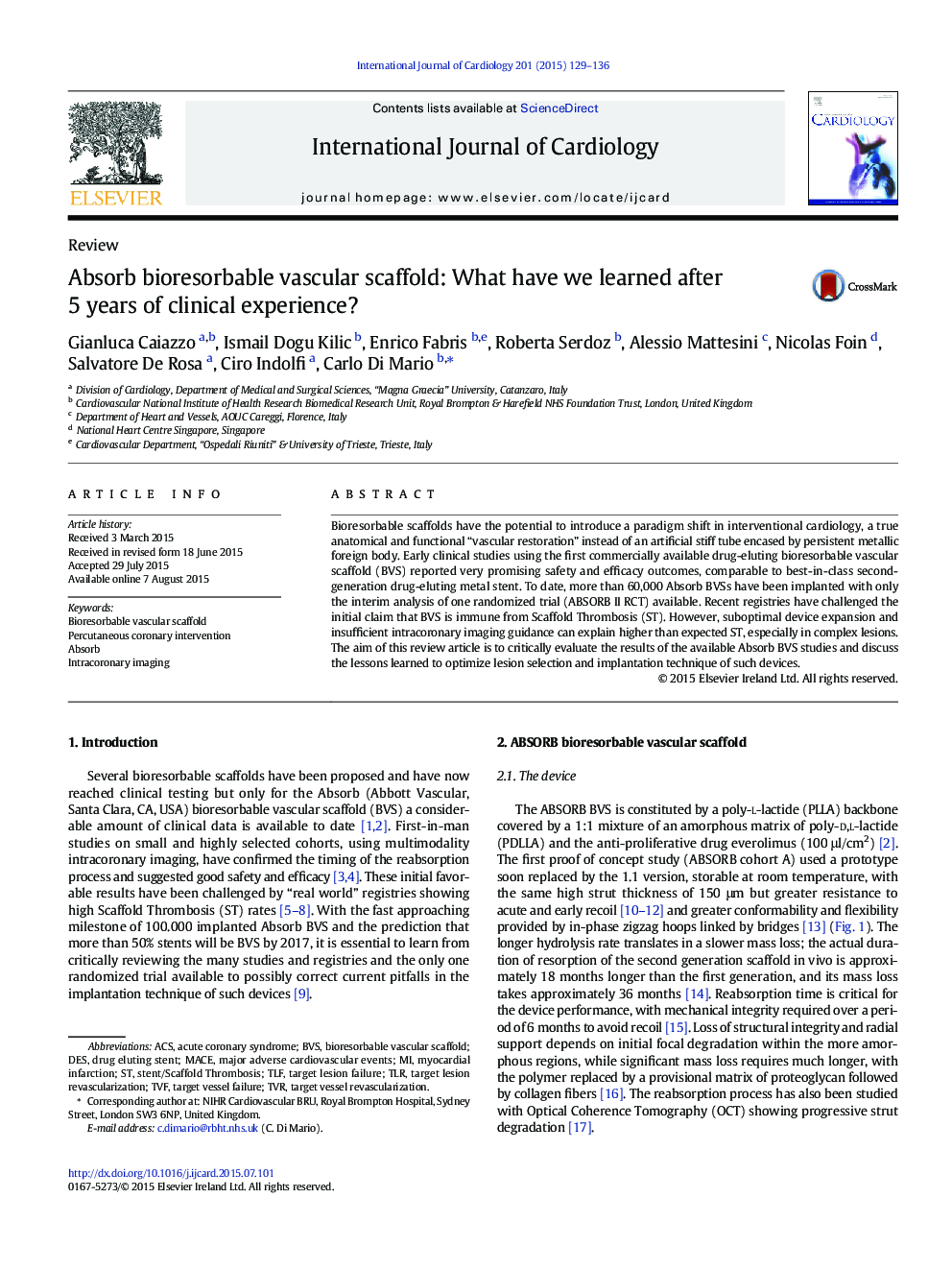| Article ID | Journal | Published Year | Pages | File Type |
|---|---|---|---|---|
| 5966276 | International Journal of Cardiology | 2015 | 8 Pages |
â¢Early studies using Absorb BVS reported promising safety and efficacy outcomes.â¢Recent registries challenged the claim that BVSs are immune from Scaffold Thrombosis.â¢Suboptimal expansion and insufficient intracoronary imaging use could explain such findings.â¢This review article critically evaluates available Absorb BVS studies.
Bioresorbable scaffolds have the potential to introduce a paradigm shift in interventional cardiology, a true anatomical and functional “vascular restoration” instead of an artificial stiff tube encased by persistent metallic foreign body. Early clinical studies using the first commercially available drug-eluting bioresorbable vascular scaffold (BVS) reported very promising safety and efficacy outcomes, comparable to best-in-class second-generation drug-eluting metal stent. To date, more than 60,000 Absorb BVSs have been implanted with only the interim analysis of one randomized trial (ABSORB II RCT) available. Recent registries have challenged the initial claim that BVS is immune from Scaffold Thrombosis (ST). However, suboptimal device expansion and insufficient intracoronary imaging guidance can explain higher than expected ST, especially in complex lesions. The aim of this review article is to critically evaluate the results of the available Absorb BVS studies and discuss the lessons learned to optimize lesion selection and implantation technique of such devices.
